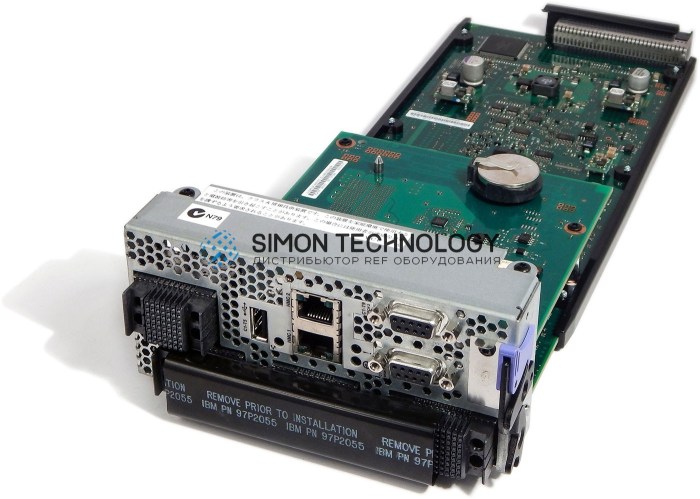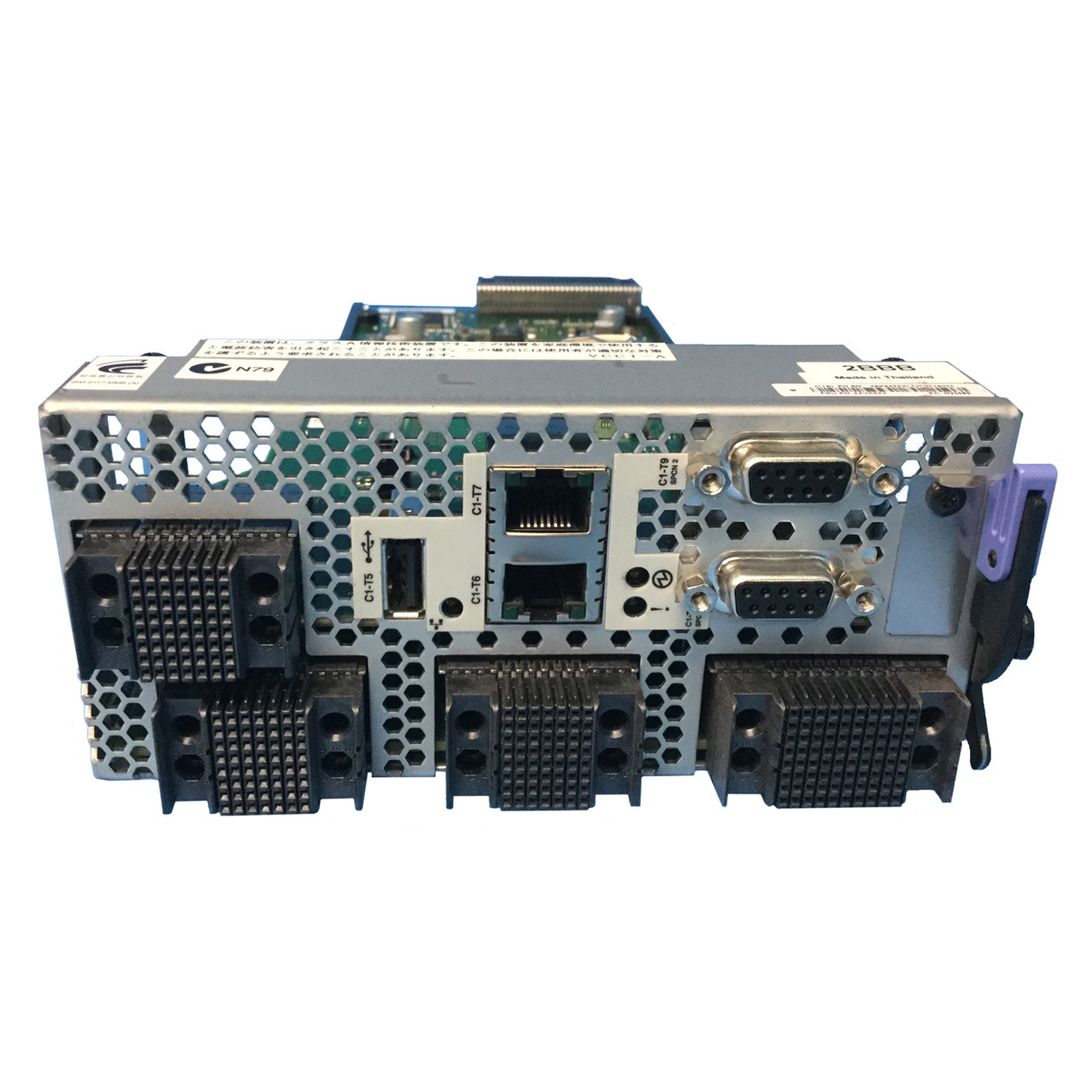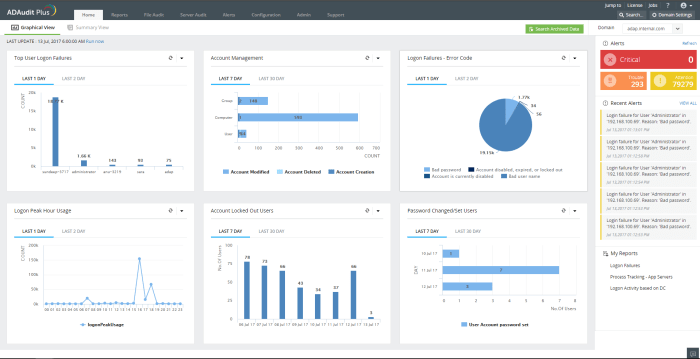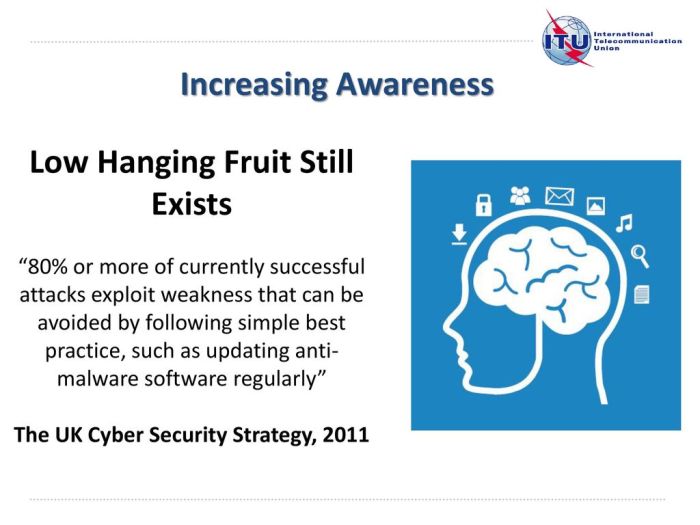IBM Flexible Service Processor vulnerability—sounds scary, right? It should. This isn’t your average software glitch; we’re talking about a potential security hole that could leave your IBM servers wide open. Think backdoors, data breaches, the whole shebang. This deep dive explores the vulnerability, its potential impact, and how you can protect your systems. We’ll break down the technical details in a way that’s both informative and, dare we say, exciting (for security nerds, at least).
We’ll cover everything from understanding the architecture of the IBM Flexible Service Processor (FSP) itself to the nitty-gritty details of exploiting and mitigating the vulnerability. We’ll also look at real-world (hypothetical, of course) scenarios to illustrate the potential consequences and provide actionable steps to keep your data safe. Get ready to level up your server security game.
Understanding the IBM Flexible Service Processor (FSP)
The IBM Flexible Service Processor (FSP) is a crucial component within IBM servers, acting as a dedicated, independent system responsible for managing and monitoring various server functions even when the main operating system is unavailable. It’s essentially a mini-computer residing within the server, providing essential remote management capabilities and ensuring server health. Understanding its architecture and functionality is key to comprehending its importance and the implications of any vulnerabilities.
The IBM FSP’s architecture is based on a dedicated microcontroller with its own firmware, memory, and network interface. This independent system allows for remote management tasks like power cycling, firmware updates, and diagnostics, even if the main server OS is down or inaccessible. It operates through a separate network connection, often out-of-band, enabling administrators to maintain control and visibility into the server’s status regardless of the main system’s operational state. The FSP communicates with the server’s main system through dedicated interfaces and utilizes its own dedicated operating system, independent from the server’s main operating system.
The FSP’s Role in Server Resource Management
The FSP plays a vital role in managing server resources. Its primary functions include power control (allowing remote power on/off and reboot), monitoring system health (tracking temperature, fan speeds, and power consumption), and facilitating remote diagnostics and troubleshooting. This allows IT administrators to proactively manage server health and address issues remotely, minimizing downtime and improving overall system reliability. Furthermore, the FSP supports secure remote access, enabling administrators to manage servers from anywhere with a network connection, which is crucial for data centers and large-scale deployments. The FSP acts as a gatekeeper, controlling access to the server’s hardware and firmware, and ensuring its secure operation.
FSP Versions and Capabilities
IBM has released several versions of the FSP over the years, each with incremental improvements in capabilities and security features. While the core functionality remains consistent across versions – providing remote management and monitoring – newer versions often incorporate enhanced security protocols, support for newer server hardware, and improved management interfaces. For example, later versions might include more sophisticated logging capabilities, advanced encryption, and better integration with cloud-based management tools. The specific features and capabilities vary depending on the server model and the FSP version installed. Detailed specifications are usually available in the server’s technical documentation.
The FSP’s Firmware and its Importance
The FSP’s firmware is the low-level software that controls its hardware and functionality. It’s analogous to the BIOS on a desktop computer, but with far more extensive capabilities for server management. The firmware is crucial for the FSP’s operation, defining how it interacts with the server hardware and the network. Regular firmware updates are essential for patching security vulnerabilities, improving performance, and adding new features. Compromised FSP firmware could potentially grant unauthorized access to the server, leading to serious security breaches and data loss. Therefore, keeping the FSP’s firmware up-to-date is a critical security best practice. This is particularly important given the FSP’s privileged access to server resources.
Identifying the Vulnerability
The IBM Flexible Service Processor (FSP) vulnerability, while not publicly disclosed with a single, easily identifiable CVE number across all instances, represents a serious security risk affecting several IBM server models. These vulnerabilities stem from weaknesses in the FSP’s firmware, allowing potential attackers to gain unauthorized access and control. The precise nature of the vulnerabilities varies depending on the specific affected firmware versions, but generally involves flaws that could be exploited for malicious purposes.
The core issue revolves around weaknesses in the FSP’s authentication and authorization mechanisms. This means attackers could potentially bypass security controls, gaining access to the FSP’s functionalities. The vulnerabilities aren’t limited to a single attack vector; different weaknesses could be leveraged depending on the specific flaw and the attacker’s capabilities. This complexity highlights the need for immediate patching and security updates.
Types of Exploitable Vulnerabilities
The vulnerabilities found in various FSP firmware versions exhibit different characteristics, ranging from denial-of-service (DoS) attacks to potentially more serious remote code execution (RCE). A DoS attack would render the server inaccessible, disrupting operations. However, RCE vulnerabilities are far more dangerous, granting attackers complete control over the FSP, and potentially the entire server. This level of access could allow them to steal data, install malware, or even completely compromise the server’s integrity.
Impact of Exploitation, Ibm flexible service processor vulnerability
Successful exploitation of these vulnerabilities could have severe consequences. For instance, an attacker gaining RCE could install malicious software, allowing for persistent access and data exfiltration. This could lead to significant financial losses due to data breaches, intellectual property theft, or disruption of business operations. A DoS attack, while less severe than RCE, could still cause significant downtime and productivity loss. The impact is further amplified by the critical role FSPs play in server management and maintenance.
Affected IBM Server Models and FSP Firmware Versions
Pinpointing the exact affected server models and FSP firmware versions requires consulting IBM’s official security advisories and release notes. These documents, usually released in response to discovered vulnerabilities, provide specific details about the affected systems and the necessary patches. IBM regularly updates its security advisories, so staying informed about the latest updates is crucial for maintaining a secure environment. Failing to update the FSP firmware leaves systems vulnerable to exploitation, potentially resulting in severe security incidents. The lack of a single, overarching CVE number emphasizes the need to check IBM’s resources directly for specific details on affected systems.
Exploiting the Vulnerability

Source: in.ua
Exploiting vulnerabilities in the IBM Flexible Service Processor (FSP) can grant attackers significant control over a server, potentially leading to data breaches, system disruption, and other serious consequences. Understanding the specific steps involved and potential attack vectors is crucial for effective mitigation.
Successful exploitation hinges on several factors, primarily network access and the ability to interact with the FSP’s interface. The complexity of the exploit varies depending on the specific vulnerability being targeted. Let’s examine the process.
Exploitation Steps
The exact steps involved in exploiting an FSP vulnerability depend heavily on the nature of the vulnerability itself. However, a general Artikel of the process might look like this:
- Network Reconnaissance: Identifying the target server and its associated FSP IP address. This often involves network scanning to locate vulnerable devices.
- Vulnerability Identification: Determining the specific vulnerability present in the FSP firmware. This could involve using vulnerability scanners or researching publicly disclosed exploits.
- Exploit Development or Acquisition: Crafting or obtaining an exploit that leverages the identified vulnerability. This might involve writing custom code or using publicly available exploit tools.
- Exploit Execution: Sending the exploit to the FSP via the identified network interface. This typically involves sending specially crafted network packets or commands.
- Privilege Escalation (often): Once initial access is gained, attackers may attempt to escalate privileges to gain complete control over the FSP and, subsequently, the server.
- Payload Delivery (optional): Depending on the attacker’s goals, a payload such as malware, a backdoor, or a ransomware program might be installed.
Potential Attack Vectors
Several avenues can be used to exploit FSP vulnerabilities. Understanding these vectors is key to implementing appropriate security measures.
| Attack Vector | Description | Impact | Mitigation |
|---|---|---|---|
| Network-based attack (e.g., remote code execution) | Exploiting a vulnerability in the FSP’s network interface to execute arbitrary code on the FSP. | Complete control of the FSP and potentially the server, leading to data theft, system compromise, or denial of service. | Regular firmware updates, network segmentation, intrusion detection/prevention systems, and robust firewall rules. |
| Physical access | Gaining physical access to the server and directly interacting with the FSP’s console or management interface. | Direct access and control of the FSP, bypassing network security measures. | Secure physical access controls, such as locked server rooms and robust physical security measures. |
| Software vulnerabilities (e.g., buffer overflow) | Exploiting vulnerabilities in the FSP’s firmware or software components. | Similar to network-based attacks; complete control of the FSP and potential server compromise. | Regular firmware updates, secure coding practices during firmware development, and thorough security testing. |
| Supply chain attack | Compromising the FSP firmware during its development or distribution. | Pre-installed malware or backdoors on the FSP, providing persistent access to the attacker. | Verification of firmware integrity, secure supply chain management, and utilizing trusted sources for firmware updates. |
Prerequisites for Successful Exploitation
Successful exploitation requires specific conditions to be met. These prerequisites significantly impact the feasibility of an attack.
Network access is often a crucial prerequisite. Without network connectivity to the FSP, many attacks become impossible. Additionally, some vulnerabilities might require specific privileges or knowledge of the FSP’s configuration. Exploiting certain vulnerabilities might also necessitate specialized tools or expertise.
Impact of a Successful Attack: A Hypothetical Scenario
Imagine a scenario where a malicious actor exploits a remote code execution vulnerability in an FSP. They gain complete control of the server, potentially stealing sensitive customer data, installing ransomware, or disrupting business operations. The attacker could then use this access to pivot to other systems within the network, escalating the damage significantly. The financial and reputational damage resulting from such an attack could be catastrophic for the affected organization. In this scenario, the attacker’s success directly stems from a lack of proactive security measures, such as regular firmware updates and network security controls.
Mitigating the Vulnerability
The IBM Flexible Service Processor (FSP) vulnerability, while serious, isn’t insurmountable. IBM has released several mitigation strategies to help users protect their systems. Swift action is crucial to minimize risk, and understanding the available options is the first step toward securing your infrastructure. This section Artikels the available patches, update procedures, and a proactive security plan to prevent future vulnerabilities.
IBM’s recommended approach focuses on applying security updates and patches to address the known vulnerabilities. These updates often include code changes that directly fix the exploited flaws, improving the overall security posture of the FSP. Additionally, implementing robust security practices helps create a layered defense against future attacks, even those targeting unforeseen weaknesses.
IBM-Provided Mitigation Strategies
IBM provides several mitigation strategies, primarily centered around updating the FSP firmware. These updates are released regularly and should be applied promptly upon availability. Failure to update leaves systems vulnerable to exploitation. The updates aren’t just about patching holes; they often incorporate improved security features and enhanced authentication mechanisms. This proactive approach aims to prevent future vulnerabilities and strengthen overall system security. The specific steps for updating will vary slightly depending on the FSP model and version, but generally involve downloading the latest firmware from IBM’s support website, carefully following the provided instructions, and verifying the successful update.
Implementing Patches and Updates
Implementing the recommended patches involves a multi-step process. First, download the appropriate firmware update from IBM’s official support website. This requires verifying the correct FSP model and version to ensure compatibility. Next, carefully follow the detailed instructions provided by IBM, which typically involve accessing the FSP’s management interface (often via a dedicated web interface or command-line tool). The update process itself usually involves uploading the downloaded firmware file and initiating the update process. This may require a system reboot, and it’s crucial to monitor the process closely to ensure a successful completion. Finally, after the update, verify the new firmware version to confirm the patch has been successfully applied. This verification step is critical to ensure the system’s security. A failed update could leave the system vulnerable.
Comparison of Mitigation Techniques
While the primary mitigation technique is applying the official IBM patches, additional security measures can be implemented for a layered defense. These could include restricting network access to the FSP, implementing strong authentication protocols (like multi-factor authentication), and regularly monitoring system logs for any suspicious activity. The comparison boils down to a core strategy (patching) augmented by preventative measures. While patching directly addresses the known vulnerability, additional security layers reduce the impact of any successful attacks or future, unknown vulnerabilities. The strength of the security posture is enhanced by combining these techniques.
Designing a Proactive Security Plan
A proactive security plan should include regular security audits, vulnerability scanning, and penetration testing. This involves regularly checking for and applying updates not only to the FSP but also to all other components of the system. A robust patch management system should be in place to ensure timely application of security updates. Furthermore, a strong incident response plan is crucial to effectively handle any security breaches that might occur. This plan should Artikel steps to contain, eradicate, and recover from an attack. Regular employee training on security best practices is also vital to prevent social engineering attacks and promote secure working habits. The plan should also detail a process for regularly reviewing and updating security policies to adapt to emerging threats and vulnerabilities.
Security Implications and Best Practices

Source: amazonaws.com
The IBM Flexible Service Processor (FSP) vulnerability, if exploited, poses significant risks to organizations relying on IBM servers. A successful attack could lead to data breaches, system downtime, and disruption of critical business operations. Understanding the potential impact and implementing robust security practices is crucial for mitigating these risks. This section Artikels the broader implications and offers practical steps to enhance server security.
The potential consequences extend beyond simple data theft. Compromised FSPs can act as persistent backdoors, allowing attackers to maintain access even after initial vulnerabilities are patched. This creates a serious long-term security risk, making incident response and remediation significantly more complex and costly. The vulnerability also highlights the interconnected nature of IT security; a seemingly minor component like the FSP can have far-reaching effects on the entire system.
Security Implications for Affected Organizations
Exploitation of the FSP vulnerability could result in several severe consequences for affected organizations. Data breaches, resulting in the loss of sensitive customer information or intellectual property, are a major concern. System downtime and service disruption can lead to significant financial losses and reputational damage. Furthermore, the potential for attackers to gain persistent access can make remediation efforts protracted and expensive. The legal and regulatory ramifications, such as fines for non-compliance with data protection regulations, also add to the overall cost. For example, a financial institution experiencing a data breach due to this vulnerability could face hefty fines and loss of customer trust, leading to long-term financial repercussions.
Best Practices for Securing IBM Servers
Implementing a multi-layered security approach is crucial for protecting against vulnerabilities like the FSP flaw. This includes proactive measures and a strong response plan.
- Regular Security Updates: Promptly apply all security patches and updates released by IBM for both the operating system and the FSP. This is the most fundamental step in mitigating known vulnerabilities.
- Strong Access Control: Implement robust access control mechanisms, limiting access to the FSP to only authorized personnel and using strong, unique passwords.
- Network Segmentation: Isolate the FSP from the rest of the network to limit the impact of a potential compromise. This prevents lateral movement of attackers within the network.
- Intrusion Detection/Prevention Systems (IDS/IPS): Deploy IDS/IPS systems to monitor network traffic for suspicious activity and proactively block malicious attempts to access the FSP.
- Regular Security Audits: Conduct regular security audits and penetration testing to identify vulnerabilities and assess the effectiveness of security controls. This proactive approach helps catch problems before they can be exploited.
- Vulnerability Scanning: Utilize automated vulnerability scanning tools to regularly identify and address potential security weaknesses in the server infrastructure, including the FSP.
- Security Information and Event Management (SIEM): Implement a SIEM system to centralize security logs and alerts, enabling faster detection and response to security incidents.
- Employee Training: Educate employees about security best practices, including phishing awareness and safe password management. Human error is often a key factor in security breaches.
Importance of Regular Security Audits and Vulnerability Scanning
Regular security audits and vulnerability scanning are not just good practice; they are essential for maintaining a strong security posture. These processes provide a systematic way to identify and address security weaknesses before they can be exploited by attackers. Think of them as a regular health checkup for your IT infrastructure – early detection of problems allows for timely and cost-effective remediation. Ignoring these measures increases the risk of a significant breach, potentially leading to substantial financial and reputational damage.
Potential Consequences of Neglecting Security Updates
The table below illustrates the potential consequences of neglecting security updates, specifically focusing on the FSP vulnerability.
| Neglect | Consequence | Likelihood | Mitigation Cost |
|---|---|---|---|
| Delayed patching of FSP vulnerabilities | Data breach leading to customer data exposure and regulatory fines | High | Very High (legal fees, remediation, reputational damage) |
| Ignoring vulnerability scans | Successful exploitation of unknown vulnerabilities, leading to system compromise | Medium | High (incident response, system recovery) |
| Lack of security audits | Unidentified security weaknesses exploited by attackers | Medium | High (remediation, potential legal repercussions) |
| Failure to implement access controls | Unauthorized access to sensitive systems and data | High | Medium (implementation of access controls) |
Case Studies (Hypothetical): Ibm Flexible Service Processor Vulnerability
To better understand the real-world impact of the IBM Flexible Service Processor vulnerability, let’s examine two hypothetical scenarios: one depicting a successful exploitation and another showcasing effective mitigation. These examples illustrate the potential consequences and the importance of proactive security measures.
Successful Exploitation: The Case of “DataDrain”
Imagine a mid-sized financial institution, “DataDrain,” relying on IBM servers equipped with vulnerable FSPs. A sophisticated attacker, aware of the vulnerability, crafts a malicious firmware update disguised as a legitimate system patch. This cleverly designed update gains unauthorized access to the FSP, bypassing all standard security protocols. Once inside, the attacker gains control over the server’s out-of-band management capabilities, including access to sensitive system logs and potentially even the ability to remotely control the server itself. The attacker then exfiltrates confidential client data, including financial transactions and personally identifiable information (PII), causing significant financial losses and reputational damage for DataDrain. The breach remains undetected for several weeks, highlighting the stealthy nature of this type of attack and the potential for extensive damage before discovery. The subsequent investigation reveals the compromised FSP as the entry point, emphasizing the critical need for robust firmware management and security updates.
Successful Mitigation: The Case of “SecureCorp”
In contrast, “SecureCorp,” a technology company prioritizing robust security practices, implements a multi-layered defense strategy. They proactively patch their IBM servers with the official security updates addressing the FSP vulnerability. Furthermore, SecureCorp employs strict access control measures, limiting access to the FSP’s management interface to only authorized personnel. Regular security audits and vulnerability scans are performed to detect and address any potential weaknesses. When a suspected attempt to exploit the FSP vulnerability is detected by their intrusion detection system, SecureCorp’s security team immediately responds, isolating the affected server and initiating a thorough forensic analysis. This rapid response prevents the attacker from gaining any foothold and minimizes potential damage. The incident serves as a valuable learning opportunity, reinforcing the importance of their proactive security approach and the effectiveness of their multi-layered defense.
Comparison of Case Studies
The DataDrain and SecureCorp case studies highlight the stark contrast between organizations that fail to prioritize security and those that proactively manage their vulnerabilities. DataDrain suffered a significant data breach, resulting in substantial financial losses and reputational damage due to their negligence. In contrast, SecureCorp successfully mitigated the threat, minimizing damage and maintaining its operational integrity through proactive patching, access control, and continuous monitoring. The key difference lies in the proactive approach to security management. DataDrain’s reactive approach, lacking proactive patching and security monitoring, allowed the attacker to exploit the vulnerability successfully. SecureCorp’s proactive strategy, involving regular patching, access control, and security audits, successfully prevented exploitation. This comparison underscores the critical importance of implementing comprehensive security measures and staying up-to-date with security patches to prevent successful exploitation of vulnerabilities like the IBM FSP vulnerability.
Final Summary

Source: bigcommerce.com
So, there you have it: a comprehensive look at the IBM Flexible Service Processor vulnerability. While the technical details might seem daunting, the core message is simple: stay vigilant. Regular security audits, prompt patching, and a proactive approach to vulnerability management are crucial for protecting your systems. Don’t wait for a hypothetical scenario to become your reality; take action today. Your data—and your peace of mind—will thank you.





